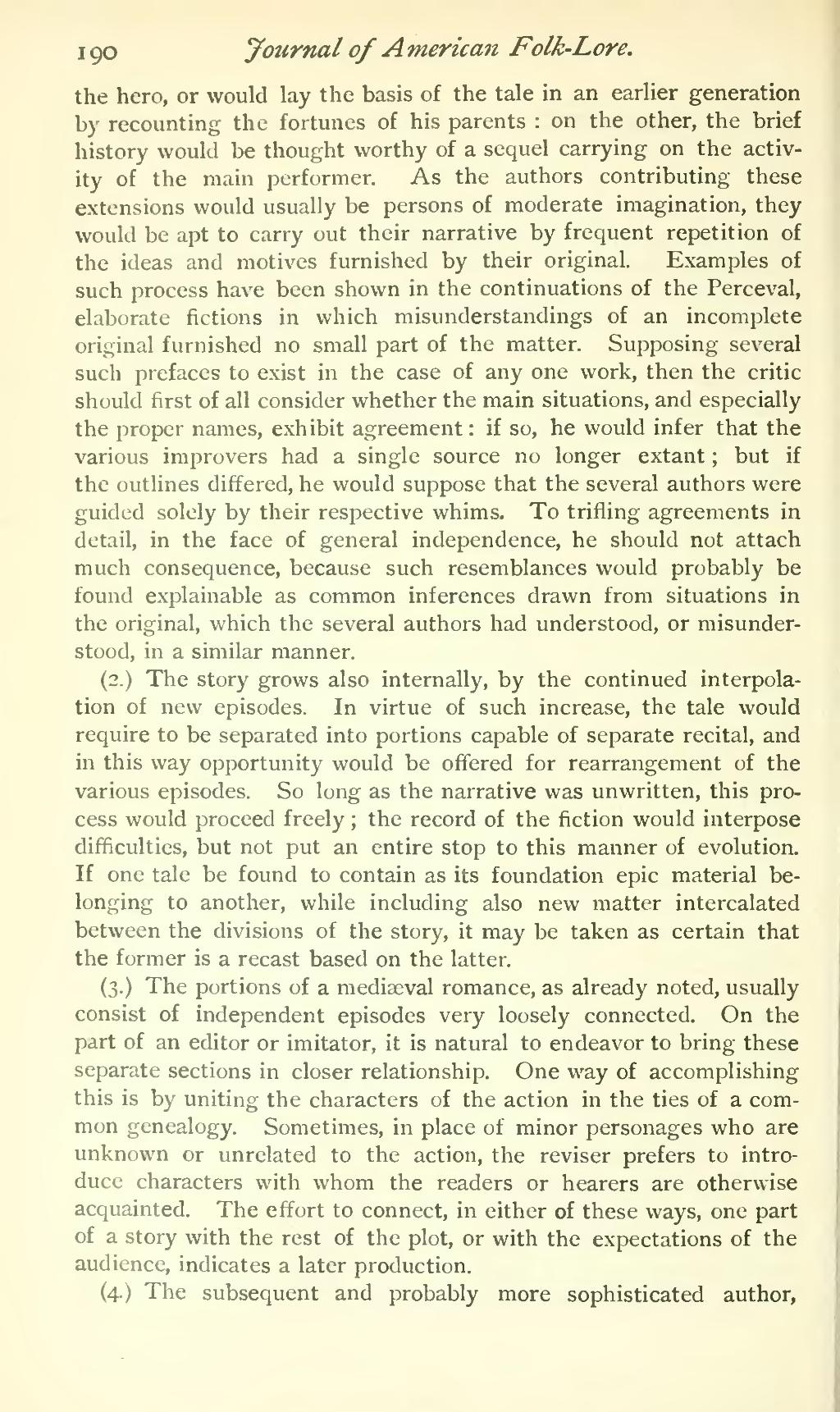1 90 Journal of A merican Folk-Lore.
the hero, or would lay the basis of the tale in an earlier generation by recounting the fortunes of his parents : on the other, the brief history would be thought worthy of a sequel carrying on the activ- ity of the main performer. As the authors contributing these extensions would usually be persons of moderate imagination, they would be apt to carry out their narrative by frequent repetition of the ideas and motives furnished by their original. Examples of such process have been shown in the continuations of the Perceval, elaborate fictions in which misunderstandings of an incomplete original furnished no small part of the matter. Supposing several such prefaces to exist in the case of any one work, then the critic should first of all consider whether the main situations, and especially the proper names, exhibit agreement: if so, he would infer that the various improvers had a single source no longer extant ; but if the outlines differed, he would suppose that the several authors were guided solely by their respective whims. To trifling agreements in detail, in the face of general independence, he should not attach much consequence, because such resemblances would probably be found explainable as common inferences drawn from situations in the original, which the several authors had understood, or misunder- stood, in a similar manner.
(2.) The story grows also internally, by the continued interpola- tion of new episodes. In virtue of such increase, the tale would require to be separated into portions capable of separate recital, and in this way opportunity would be offered for rearrangement of the various episodes. So long as the narrative was unwritten, this pro- cess would proceed freely ; the record of the fiction would interpose difficulties, but not put an entire stop to this manner of evolution. If one tale be found to contain as its foundation epic material be- longing to another, while including also new matter intercalated between the divisions of the story, it may be taken as certain that the former is a recast based on the latter.
(3.) The portions of a mediaeval romance, as already noted, usually consist of independent episodes very loosely connected. On the part of an editor or imitator, it is natural to endeavor to bring these separate sections in closer relationship. One way of accomplishing this is by uniting the characters of the action in the ties of a com- mon genealogy. Sometimes, in place of minor personages who are unknown or unrelated to the action, the reviser prefers to intro- duce characters with whom the readers or hearers are otherwise acquainted. The effort to connect, in either of these ways, one part of a story with the rest of the plot, or with the expectations of the audience, indicates a later production.
(4.) The subsequent and probably more sophisticated author,
�� �
